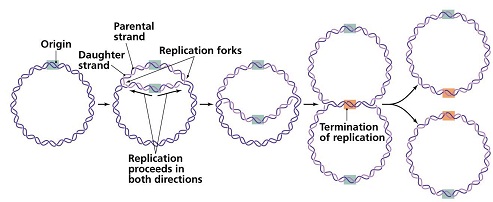DNA Replication in Bacteria:
The DNA replication is a biological procedure which occurs in all living organisms and copies their DNA; it is the basis for biological inheritance. The procedure will begins when one double-stranded DNA molecule produces two identical copies of the molecule. Cell cycle mitosis also pertains to the DNA replication or reproduction procedure. The cell cycle involves interphase, prophase, metaphase, anaphase and telophase. Every strand of the original double-stranded DNA molecule serves as sample for the production of the complementary strand a procedure referred to as semiconservative repetition. The Cellular proofreading and error toe-checking mechanisms ensure near ideal fidelity for DNA replication.

In the cell, DNA replication starts at specific locations in the genome, known as "origins". Unwinding of DNA at the origin and synthesis of new strands forms a replication fork. Although to DNA polymerase, the enzyme which synthesizes the new DNA through adding nucleotides matched to the template strand, a number of other proteins are related with the fork and assist in the continuation and initiation of DNA synthesis.